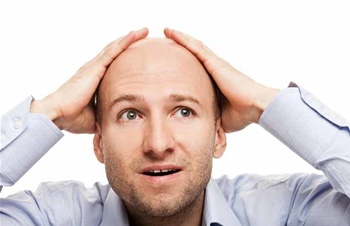 Contrary to popular belief, bumping your head does not always lead to the loss of a hair graft however, this is dependent on several factors and different variables. Patients may unnecessarily be stressing themselves out after surgery being overly cautious and careful when it is not necessary. In this article, we will go over the several factors that may lead to the loss of a hair graft and when patients should worry or consult their hair transplant surgeons.
Contrary to popular belief, bumping your head does not always lead to the loss of a hair graft however, this is dependent on several factors and different variables. Patients may unnecessarily be stressing themselves out after surgery being overly cautious and careful when it is not necessary. In this article, we will go over the several factors that may lead to the loss of a hair graft and when patients should worry or consult their hair transplant surgeons.
Hair Restoration Process
After a hair transplant procedure the scalp is typically pink or red with tiny scabs forming around the micro-incision recipient sites. The tiny graft incisions generally heal within 7-10 days after surgery. The redness typically clears up and fades after a few weeks however, some fair skinned patients may experience persistent redness for a few months. The majority of patients begin to shed their transplanted hair around the 3rd to 4th week following surgery. During this time patients enter what is commonly referred to as the "ugly duckling" phase. The "ugly duckling" phase occurs when patients shed their transplanted hair and develop a condition called telogen effluvium or shock loss. Shock loss is a short-term form of hair loss that occurs after stress, trauma, or a surgical procedure. Shock loss is described as a chronic hair shedding for an prolonged period of time lasting up to 6 months. In some cases, the constant hair shedding causes patients to appear balder than they were before surgery. However, the good news is that shock loss is a temporary condition that only lasts a few months and resolves itself over time. In most cases, patients begin to experience their transplanted hair growth and their native hair re-growth at the same time.
When Are Grafts Secure?
In a study conducted by Coalition Hair Transplant Surgeon Dr. Robert Bernstein, the study showed that for the first two days, pulling on a hair or bumping the head always resulted in a lost graft, but the chance of the graft being removed decreased by the third day. By the sixth day pulling on a hair or bumping the head would no longer result in a lost graft. However, pulling on adherent scabs always resulted in a lost graft through day five, with the dislodghing of a graft decreasing up until day eight. Furthermore, by nine days post-op, grafts were no longer at risk of being dislodged could not be removed from the scalp unless removed surgically.
Conclusion
While the studies conducted by Dr. Robert Bernstein provide clinical data that shows grafts are completely anchored and secure by day nine, some patients worry that their grafts are at risk up to six-months after surgery. However, this is an incorrect assumption. Every hair restoration surgeon want's their patients to be careful and keep the delicate grafts safe at all times however, being overly cautious can lead to unnecessary anxiety. In most cases, patients bump their head or pull their graft after the grafts have already been anchored in to their scalp which does not lead to the loss of a hair graft. However, any patients that experience bleeding prior to day nine should consult with their hair transplant physician immediately for follow-up care.

